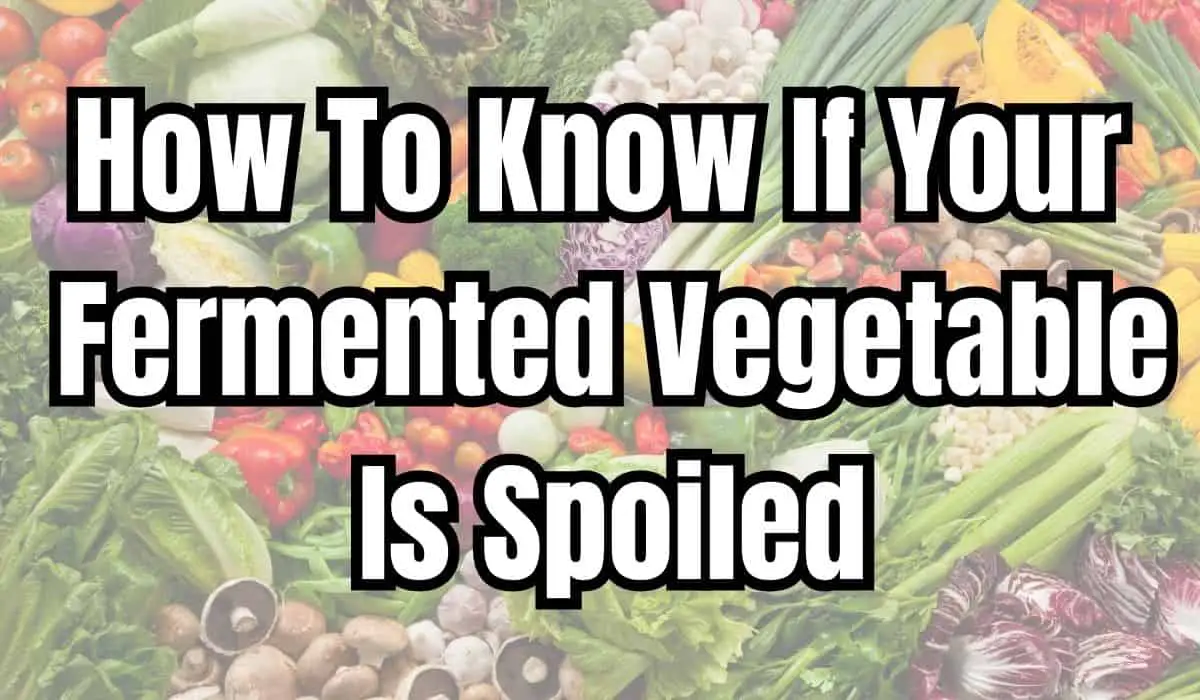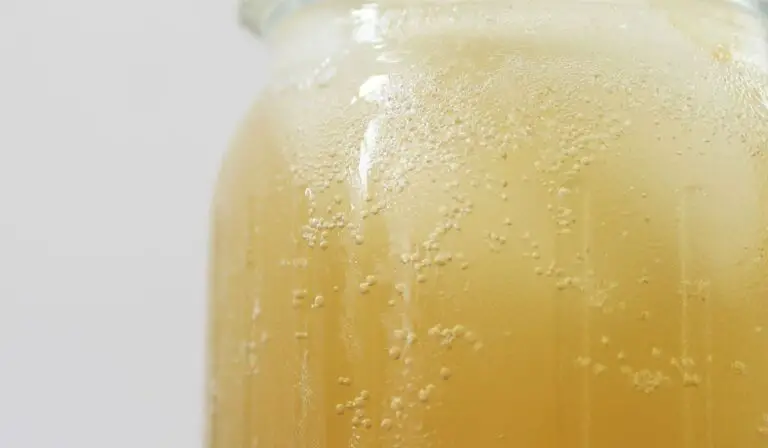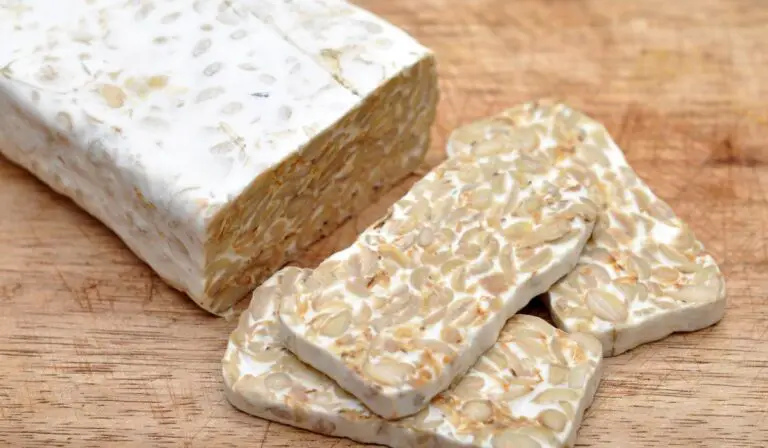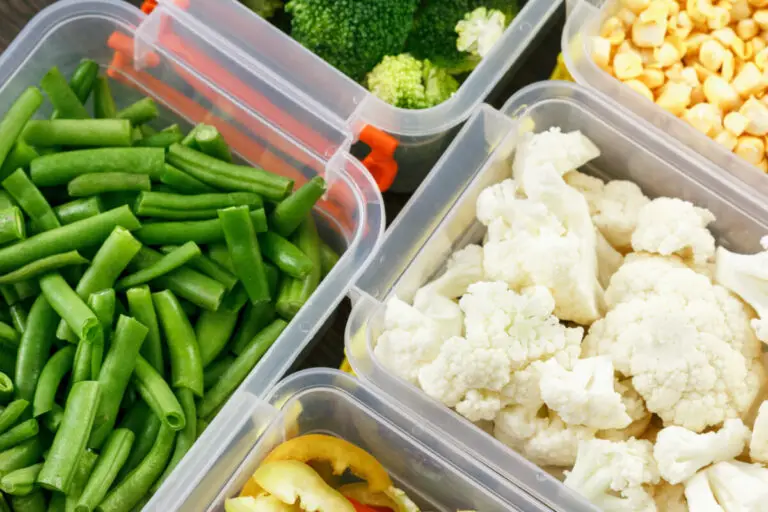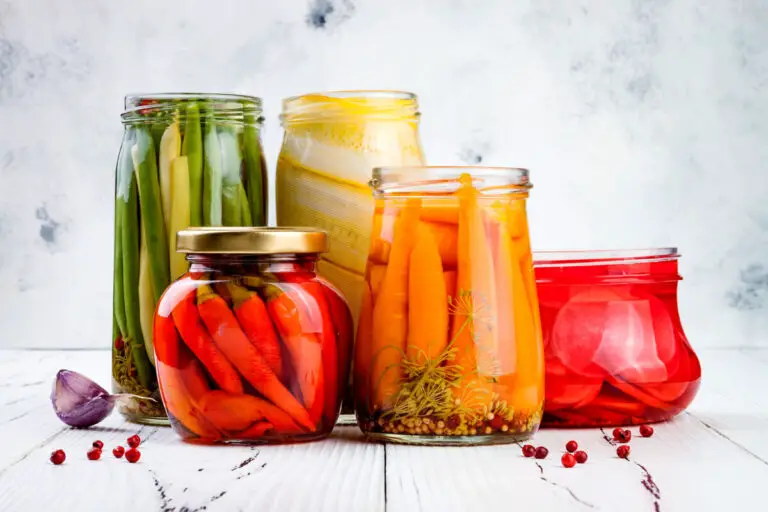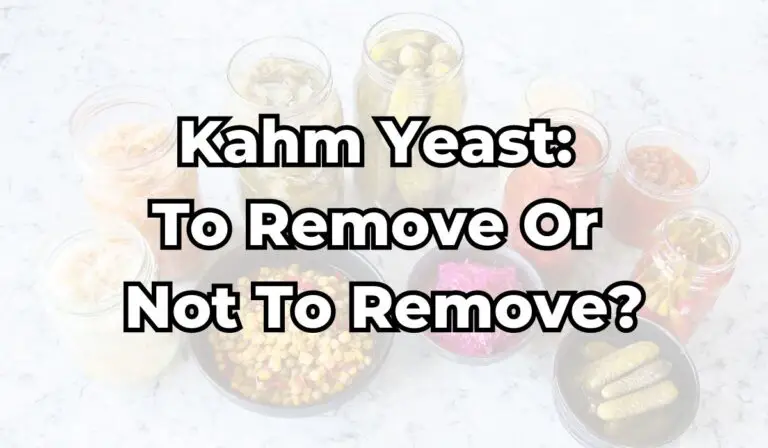Easy Step-By-Step Guide To Know If Your Fermented Vegetable Is Bad
Hi there! Correctly identifying when your fermented vegetables have gone bad is extremely important. This is why I’m excited to share my easy step-by-step guide on recognizing if your fermented vegetable has spoiled.
In this article, you’ll learn all the key signs that suggest your fermented veggies are no longer safe for consumption and the steps you can take to avoid spoiling in the first place.
So let’s get started!
Main Signs Of Spoiled Fermented Vegetables
There’s nothing worse than thinking you’ve made the perfect ferment only to find out it has gone bad. But how can you know if your vegetable ferments are spoiled?
Here is a list of some unmistakable signs that your fermented vegetable might be spoiled:
- off-flavours
- slimy texture
- mouldy patches
- foul smell
- discoloured spots
- Flies and larvae on your ferment or under your lid
Definitely keep an eye out for these, as they could be a strong indicator that things are going south.
But remember: your nose is your most powerful tool. The smell is critical when detecting whether your fermented vegetable is past its prime. Foul odours will indicate that it’s time to go straight into the trash bin and start anew (don’t worry, we’ve all been there).
If this happens, don’t lose hope – just think of it as a practice which means you’ll get better at making ferments with each attempt!
If everything seems ok on the surface but still doesn’t seem quite right, then take a whiff before taking a bite – trust me, rotten fermented veggies aren’t anything close to appetizing!
The Smell of A Spoiled Fermented Vegetable
Fermented vegetables should smell pleasantly sour and vinegary. If your fermented vegetables have a pungent or rancid smell (like rotten food or “way too long in your fridge” broccoli), it has gone bad.
Visual Signs Of A Spoiled Ferment
Now, let’s take a look at what visual signs can tell you about whether or not your ferment has gone bad.
Generally speaking, the colours will change, but they should change evenly throughout the whole vegetable. Pieces of vegetables with two tones/colours are a bad sign.
Mould is another visual clue that things are going wrong. Some people do just scoop it out, but I don’t. Better safe than sorry. I prefer to start again. Fermentation = Patience.
It’s important to remember that these visual cues can give clues as to whether your ferments have gone bad but cannot guarantee 100% accuracy – always use caution when tasting spoilt ferments! And trust in your nose.
Texture Of A Spoiled Ferment
The texture of a spoiled ferment can assist you in figuring out if your ferment is inedible. For example, if the vegetables feel slimy, then they’ve gone bad and should be thrown out immediately. You’ll also want to check for any off odours or discolouration since those are other signs of spoilage.
The good news is that most types of fermented vegetables last quite a while — up to several months when stored correctly! All you need to do is keep an eye on how quickly you use up each batch and set aside enough space in your refrigerator for storage containers with tight-fitting lids. If ever in doubt about whether or not something has gone bad, don’t risk it: ditch it and try again with fresher ingredients next time!
After all, quality fermentation requires more than just luck – start with top-notch produce from the beginning, and you’ll always get delicious results every single time.
The 3 Steps Test To Know If Your Fermented Vegetables Is Spoiled
The Smell Test
The smell is the most powerful sense to assess when it comes to knowing if your fermented foods are spoiled.
Fermented vegetables should have a pleasantly sour and vinegar-like aroma. If the smell is pungent or off-putting, like something has gone bad, it’s best to discard the food. And it shouldn’t smell like alcohol, either.
If you can’t detect any smells, it could be that your vegetables haven’t started fermenting yet.
The Visual Test
When you look at the vegetables, you may see bubbles, indicating that fermentation is occurring.
The colours of the vegetables can also change during fermentation, which is expected, but they should change as a whole.
For example, if the colours of the same piece of vegetable are two-toned, it can mean that there was not enough salt in the brine, and spoilage might be taking place within the vegetable.
Another colour to keep your eyes peeled for is brown. Again, it does not necessarily mean that it is spoiled, but it is a red flag.
In these cases, take a sniff and discard the vegetable if it doesn’t smell right.
If you spot mould on top of the brine, some people (including me) say it is better to discard it, while others recommend just scooping it out. However, there is no discussion if you spot mould under the brine. Just throw it away.
If there are flies under your lid or cloth, also throw it away. It is not worth it.
The Texture Test
Finally, the texture of the vegetables will also change as fermentation progresses, usually getting softer.
The texture should not be slimy, though, and it shouldn’t have goo on top of it. If your vegetables have ooze on them, discard the food.
| Healthy Signs on Fermented Vegetables | Spoilage Sgins on Fermented Vegetables |
| Bubbles | Mould |
| Even Colour Change | Two-Toned Vegetables |
| Firm Vegetables | Slimy Vegetables or Goo |
| Kahm Yeast | Flies |
| Pleasantly Sour and Vinegary Smell | Rotten Smell |
Kahm Yeast And Fermenting
Kahm yeast is a type of harmless yeast that forms when the pH of a ferment reaches a certain level. There’s no need to worry as they are non-toxic and safe to eat, and it’s easy to tell them apart from mould.
The tell-tale signs of Kahm yeast are easy to spot. Unlike mould, which appears fuzzy, Kahm yeast has a matte, white finish. It is also likely to be found covering the entire top layer of a ferment, like a film on top of it.
I scoop the Kham Yeast out of my ferments, as I’m not too fond of the taste of it. But this is totally up to you. So my advice is: experiment both ways and choose what you like!
With these tips in mind, you won’t need to worry about whether or not your ferments are safe to eat – just remember that prevention is always better than cure!
So please get familiar with what healthy fermentation looks like so that when something isn’t quite right, you’ll recognize it immediately and take action accordingly. Trust me – keeping your ferments fresh will become second nature once you learn how to spot bad ferments early on!
Appropriate Storage Conditions
It’s essential to store your fermented vegetables in appropriate conditions for them to last. The wrong storage environment can cause mouldy contamination, an acidic taste and off flavours that could ruin the entire batch.
Here are some tips on how to make sure you’re storing correctly:
- Store at a temperature of 40°F (4.5°C) or lower — any warmer than this increases the risk of spoilage and unwanted bacteria growth
- Ensure no direct sunlight hits your jars.
- Keep containers sealed tightly so as not to let oxygen in, which causes sour smells and other undesirable effects.
By following these steps, you’ll be able to ensure long-term storage quality without worrying about unwanted flavours or odours ruining your fermented vegetable batches!
Following these basic guidelines and frequently checking throughout fermentation should keep you in great shape when trying new recipes and experimenting with different vegetables.
Remember that even though we strive for perfection every time, sometimes things don’t go according to plan – but that doesn’t mean you can’t still enjoy yourself along the journey towards deliciousness!
Quality Control Checks
When it comes to controlling the quality of your fermenting vegetables, there are several key areas you’ll want to keep an eye on.
First and foremost is salt levels; too little or too much can lead to spoilage and a poor flavour profile.
Secondly, you can monitor your pH levels – this will help determine if there’s an opportunity for any mould growth or harmful bacteria contamination to happen.
Thirdly, have your eyes peeled for any changes in colour or texture that could indicate something isn’t right with your vegetable fermentation process.
Lastly, the smell test. Your nose is your most powerful tool to understand what is happening with your fermented vegetables.
If done correctly, these methods will guarantee delicious fermented veggies and provide peace of mind knowing they were produced safely! Furthermore, with proper knowledge and experience under your belt, anyone can become an expert in fermenting vegetables at home!
Frequently Asked Questions
What Is The Best Temperature For Fermenting Vegetables?
Fermenting vegetables is like a science experiment- getting the right temperature, flavourings, salt ratios, optimal time and batch size, to name a few- can make all the difference between success and failure.
When it comes to fermenting vegetables for maximum taste and quality, the ideal temperature range you should aim for is between 68°F – 72°F (20°C – 22.2°C).
If you keep these parameters in mind when fermenting any vegetable, you’re sure to have delicious results every single time!
What Is The Shelf Life Of Fermented Vegetables?
When it comes to the shelf life of fermented vegetables, it depends on a few variables.
Salt content is an important factor; the higher the salt content, the longer your veggies will last.
The fermentation process itself also plays a role – if done correctly, you can expect your ferments to last several weeks or even months.
The way you store your ferments (check the topic above for more info) also plays an essential role in the shelf life of your fermented vegetable.
To get maximum health benefits and flavour profiles from your ferments, aim to store them in airtight containers at cool room temperatures or in the refrigerator.
With proper care and storage techniques, you should be able to enjoy all the deliciousness of fermenting for many weeks or even months!
Are Fermented Vegetables Safe To Consume If They Are Past Their Best Before Date?
If fermented vegetables are past their best-before date, it’s crucial to be aware of potential signs that the veggie is no longer safe to consume.
Off flavours, changes in texture and a sour smell can all indicate spoilage bacteria has begun to grow on the vegetable.
If there are any doubts about safety, then it’s better to err on the side of caution and discard the ferment altogether.
Use the guide and information above to assess if your fermented vegetables are safe to eat.
Conclusion
Fermenting vegetables is an exciting way to add flavour and nutrition to your diet. As you become more familiar with the process, it will become easier to know when your fermented vegetable is spoiled.
With a bit of knowledge about what a spoiled ferment looks like, storage times, temperature, shelf life and best-before dates, it will be easy for you to recognize any signs of spoilage in fermented veggies – like a skipper spotting land on the horizon!
So take some time now to learn all you need to know about fermenting vegetables and taste the deliciousness they offer without worry.

